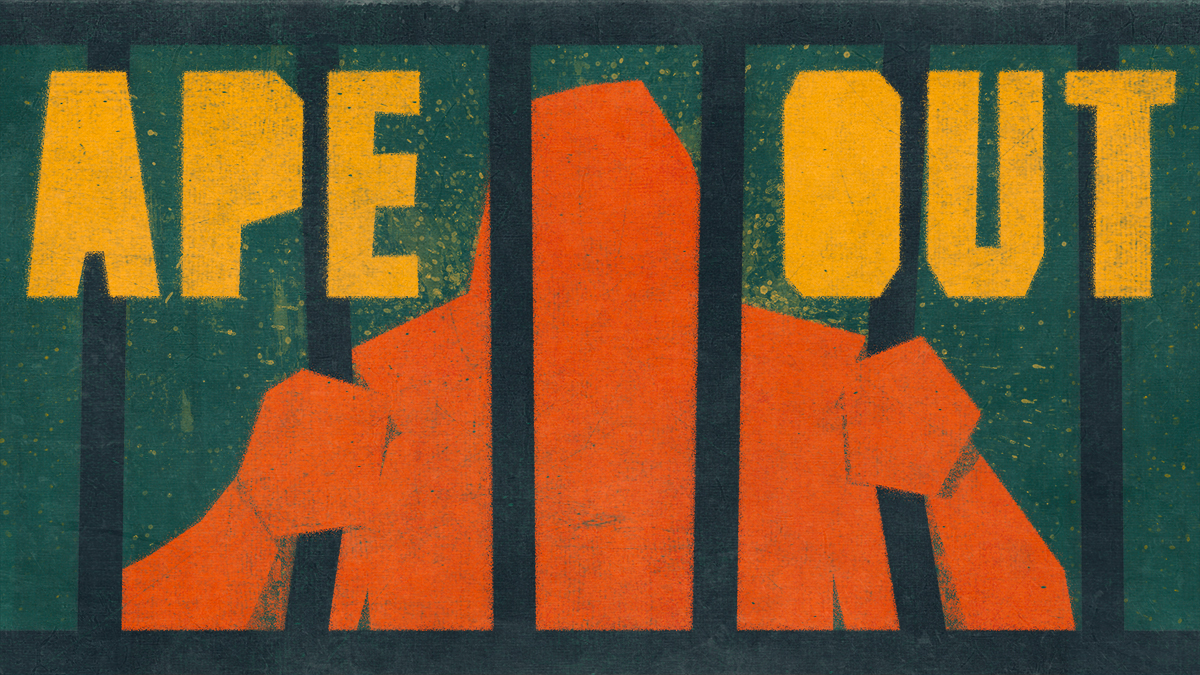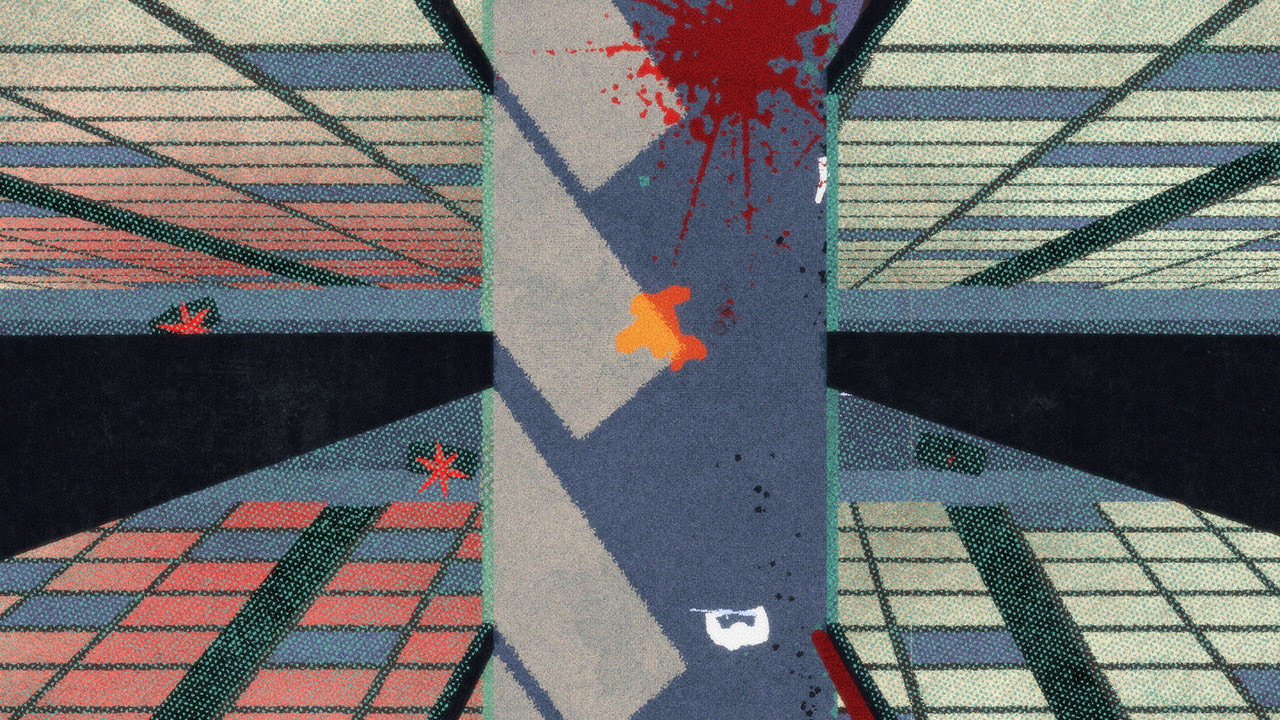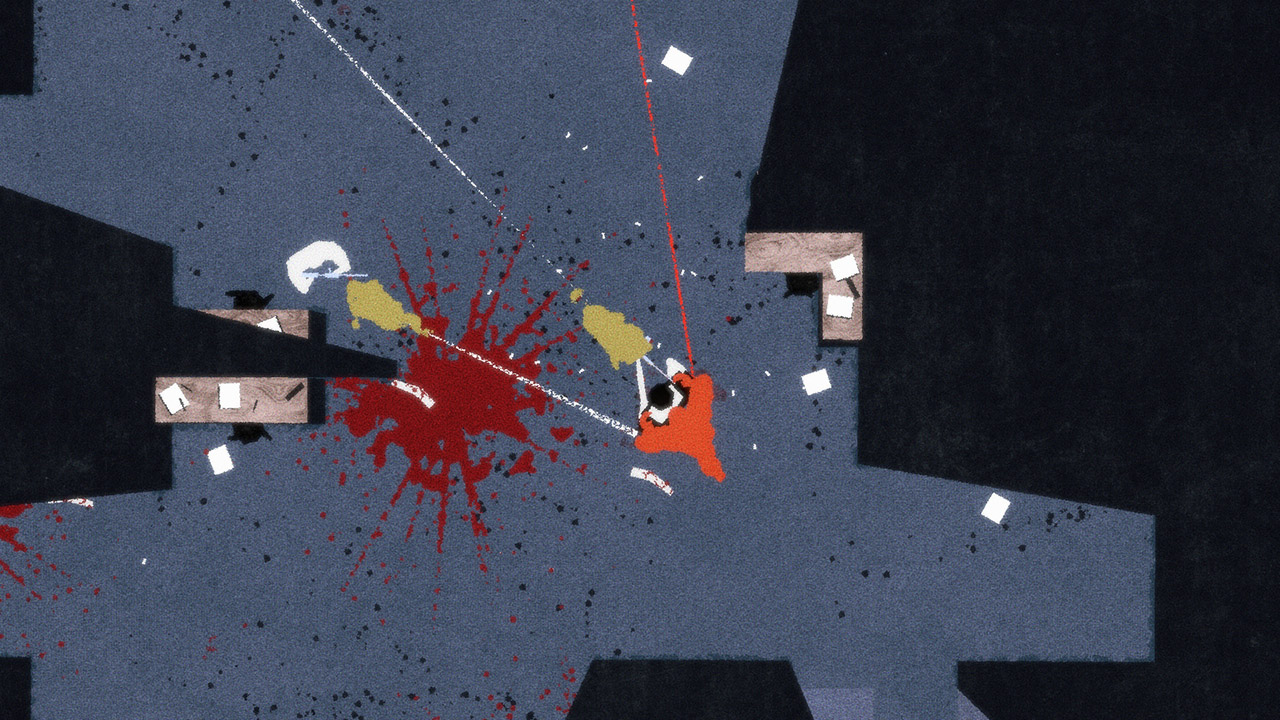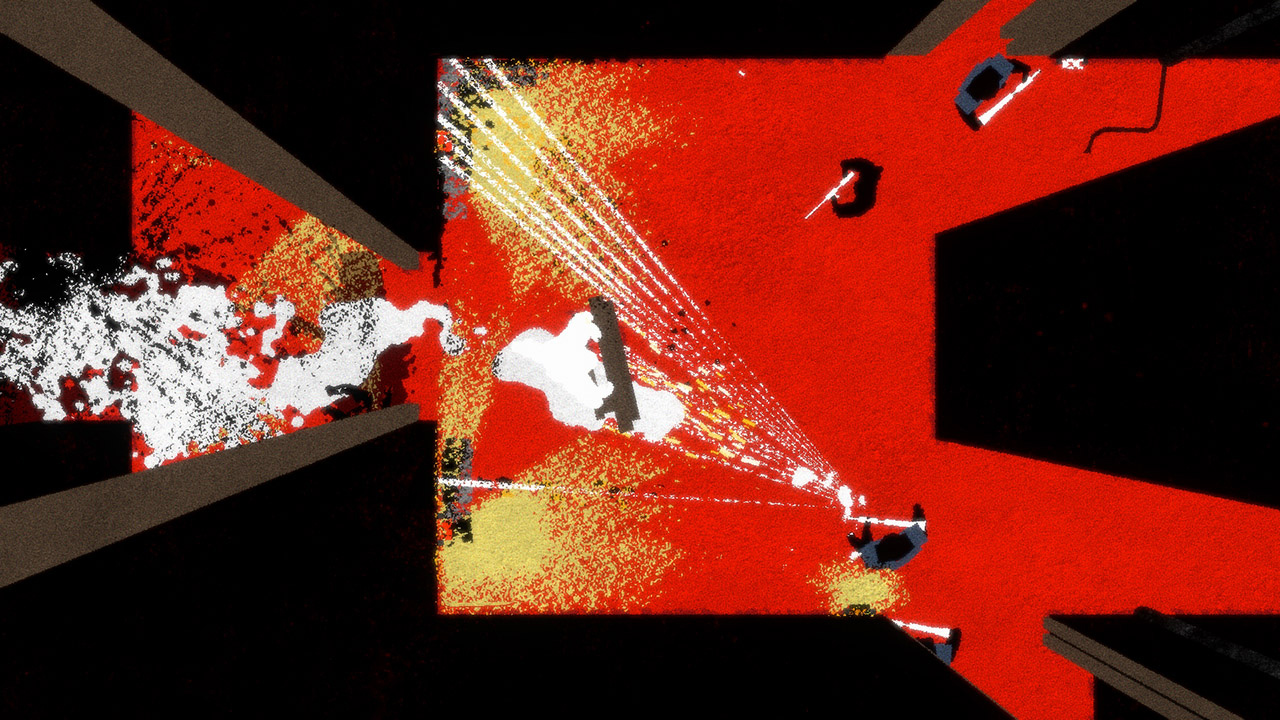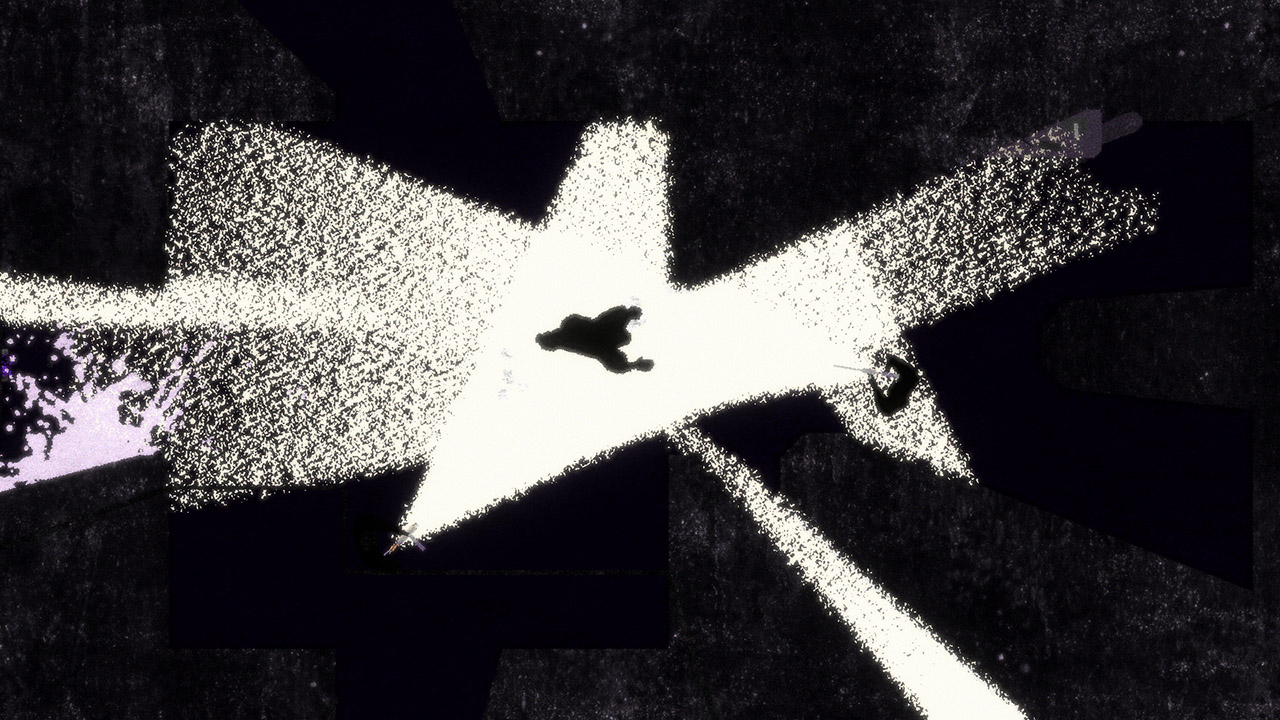The title of this game pretty much says it all; in Ape Out you are an ape and you reeeeeealy want to get out. We don’t know exactly in what kind of place you’re trapped, but having to get past so many armed guards tells me it isn’t exactly the San Diego Zoo. You’re going to need a few simple things to play Ape Out: a good sense of timing, quick reactions, and an appreciation of semi-freeform jazz. The soundtrack is actually one of the more pleasant features of the game, but we’ll get into that a bit later.
The gameplay is pretty simple; roam around the halls and smash everyone who gets in your way. You can, of course, try to avoid the pesky humans—after all, they’re carrying shotguns and seem to be rather trigger-happy when you approach. You may be the 400-pound gorilla in the room, but keep in mind that it only takes three shots to bring you down for good (or at least until you restart the game from the last waypoint).
You have two basic attacks at your disposal: shove and grab. If you use your shove attack using the R or ZR buttons, your target gets pushed hard enough that when he hits the wall behind him, you end up with part of him over here, part of him over there, and a Jackson Pollock painting on the floor. The other attack uses the L or ZL buttons and grabs something (human, door, etc.). If you grab a human, you can use her like a, well, “human shield” actually is the best descriptor. If you point her in the right direction, in about one or two seconds from being grabbed she will fire her weapon away from you so you may be able to “shoot” another guard while using your unwilling partner to absorb one shot from your captors. The downside to the grab attack is it gets very awkward to move because both movement and grab are on the left Joy-Con.
The game is not a breeze to play; it takes some concentration and a little pattern memorization to get through each stage.
The place you’re running through is a maze of corridors and small rooms. You get a top-down view so you get a good look at your position and a little of the surrounding area. This perspective does let you see around corners a bit so you don’t have to stick your neck out to spot the next guard, but you can’t see that far down a long corridor, so be careful anyway. There are plenty of halls, rooms, and guards to smash to keep you busy for hours.
Getting back to the look and sound of the game, the visuals are pretty simple—almost solid silhouettes for the gorilla and the guards, very limited colors for the walls and doors, and very few details in anything. The blood, which splatters around when you give a guard a terminal push, is usually rendered in one of three or four colors in large splotches on the floor. If your ape gets splattered because he’s close to the impact or if he walks through a pool of blood he will leave a trail of paw prints on the floor. This can be handy as a means of keeping track of where you have been.
While the developers have kept the imagery very simple, the soundtrack gets creative. As noted above, an appreciation of jazz music helps when playing Ape Out. This is not Charlie Brown light jazz, it’s more like musicians hanging out, jamming, and just playing what comes to mind while trying to maintain a theme with the other musicians. It’s fast-paced and lively as determined by your ape’s attacks. Every time you splatter a guard the music provides a nice crash of the cymbals (and the controller rumbles for some tactile feedback, as well).
The tempo of the music is quick enough that the cymbal crash always sounds good so you get an interactive soundtrack with a snappy beat—not bad. This brings us to the difference between playing on a TV and on the touchpad. On the big screen, the visual experience is not greatly improved because the imagery is pretty low on detail. However, if your TV has a nice sound system, the music gets better, fast. The other way to make sure the audio experience is being had in all its glory is to use some nice headphones. Otherwise, the game is fine either on the touchscreen or on the TV.
Review: Ape Out (Nintendo Switch)
Good
While it can be fun to run around smashing stuff and listening to a cool soundtrack, Ape Out is a bit of a one-trick pony. When you boil it down, it’s a maze runner with a smash-the-bad-guys element. Don’t get me wrong—the theme may be simple, but the game is fun to play. It’s challenging enough to keep you entertained for several hours so go let your inner monkey run wild for a while.

